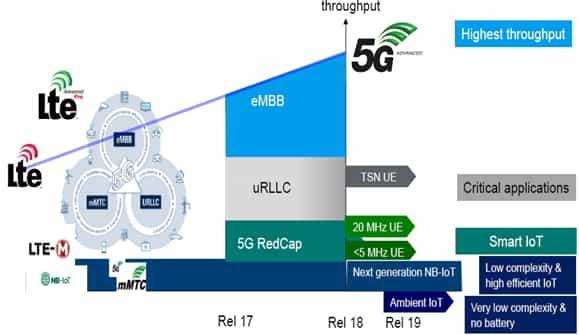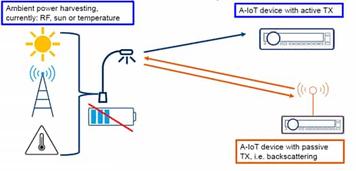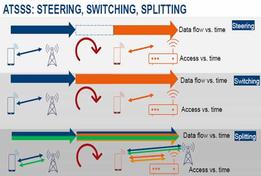5G NR RedCap IoT: Features, Benefits & Limitations
Advertisement
Introduction : 5G NR RedCap (Reduced Capability) is a streamlined version of 5G designed to serve mid-tier IoT devices that require moderate data rates, lower complexity and improved energy efficiency compared to full 5G devices. It strategically fills the significant gap between the extremely low power, low data rate technologies like NB-IoT and the high performance, high cost capabilities of 5G Enhanced Mobile Broadband (eMBB).
Features of 5G NR RedCap
- Hardware and Antenna Simplification : RedCap devices are simplified to use only one or two receive antennas and a single transmit antenna compared to complex multi-antenna arrays found in smartphones. This drastically reduces the physical size, cost and complexity of the radio frequency (RF) front end.
- Reduced Bandwidth : Its bandwidth is limited to 20 MHz in 5G’s FR1 frequency range (and 100 MHz in FR2), with further reductions down to 5 MHz introduced in 3GPP Release 18 (known as eRedCap).
- Simpler communication schemes : RedCap devices use half duplex FDD, meaning they can only transmit or receive at any given moment, not both simultaneously. Complex modulation schemes such as 256QAM are specified as optional.
- Low transmit power : Specification allows lower maximum transmit power which simplifies power amplifier.
- Optimized for lower mobility : RedCap is designed with the assumption that many of its target devices will be stationary or slow-moving (e.g., industrial sensors, CCTV cameras).
 Image Courtesy : Rohde & Schwarz
Image Courtesy : Rohde & Schwarz
Benefits of 5G NR RedCap
Following are some of the advantages of 5G NR RedCap:
- Significant Cost Reduction: The most critical benefit is a dramatic drop in device cost compared to full capability 5G eMBB modem.
- Balanced “Just Right” Performance : With peak data rates of 10-100 Mbps (as per release), it is significantly faster and has lower latency than older LTE-M or NB-IoT technologies.
- Enabling New 5G Use Cases : This balanced performance-to-cost ratio unlocks new markets for 5G such as CCTV cameras, Future Railway Mobile Communications Systems (FRMCS), Public Protection and Disaster Relief (PPDR) communications, wireless sensors etc.
- Enhanced Power Efficiency: The combination of simplified hardware and optimized protocols leads to lower energy consumption, resulting in significantly longer battery life for mobile IoT devices.
- Future expansion : The roadmap for RedCap includes support for Non-Terrestrial Networks (NTN), which will allow these devices to connect via satellite, offering truly global coverage for applications in logistics, agriculture and remote monitoring.
Challenges of 5G NR RedCap
Following are some of the limitations of Ambient IoT :
- Intentionally Lower Performance: By design, RedCap is not suitable for high demand applications. Its peak speeds, bandwidth and latency performance are substantially lower than what is expected from a 5G smartphone or a fixed wireless access terminal.
- Dependancy on 5G SA mode : RedCap devices require a 5G Standalone (SA) network architecture. They cannot operate on the more common Non-Standalone (NSA) 5G networks that rely on a 4G core.
- RedCap is not suited for applications requiring robust connectivity while moving at high speeds, as the handover capabilities are intentionally simplified.
- Using a half duplex RedCap device over a satellite link (NTN) introduces long signal delays.
Summary: “5G NR RedCap” bridges the gap between high performance 5G use cases and low power technologies like LTE-M or NB-IoT. Key benefits include reduced device cost, extended battery life, simplified design, and native 5G integration enabling enhanced reliability and latency performance.
-
References :
- 3GPP Release 17, Rel. 18, Rel.19 and beyond.
- TR 38.875 - “Study on NR support for reduced capability (RedCap) user equipment (UE)”
-
Current Status (as on Oct. 2025): Rel.17 is now commercial, Rel. 18 is in development and Rel. 19 work is active.
Advertisement
 RF
RF



